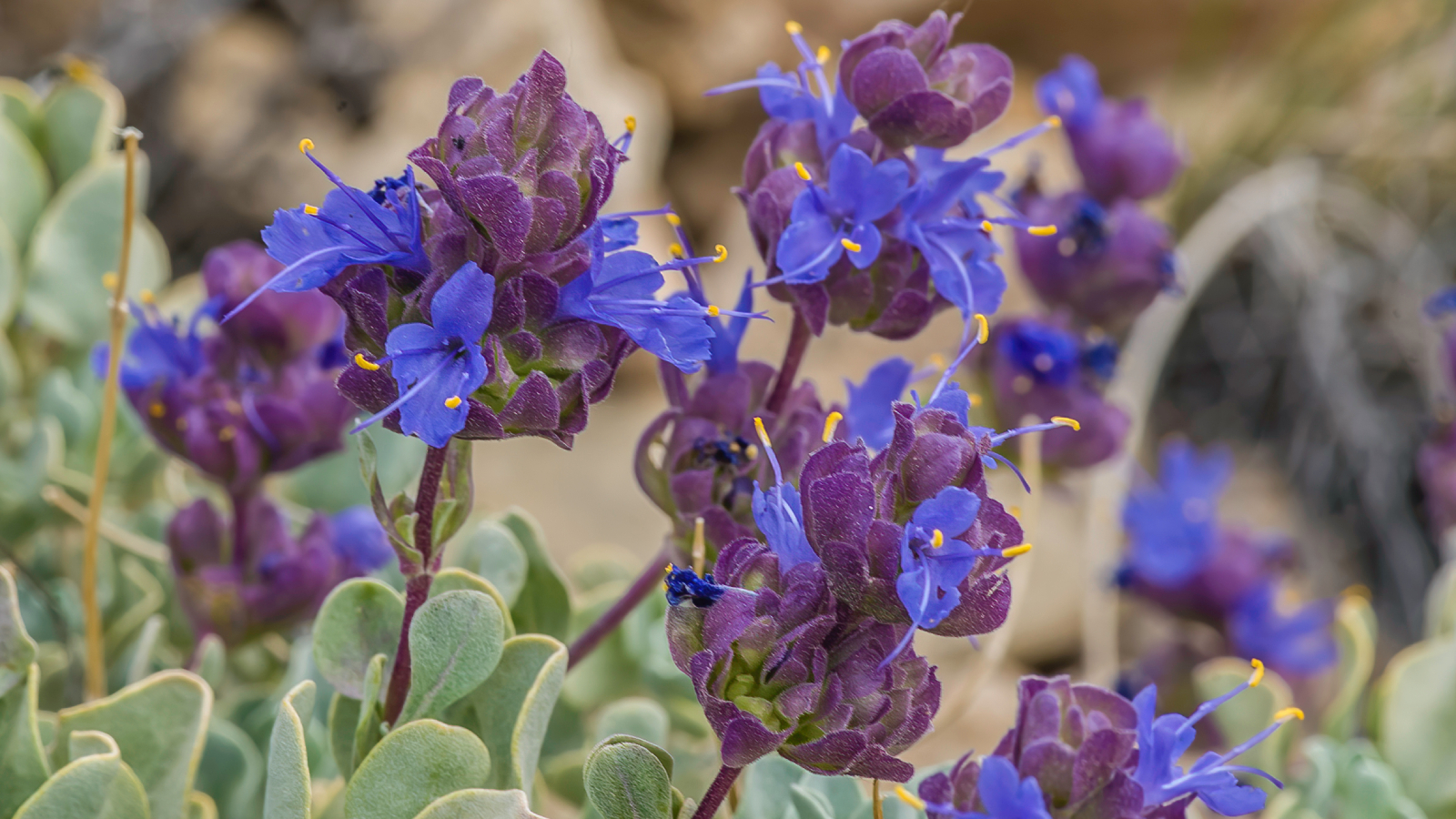Purple Sage Care Guide: How To Grow This Blooming Desert Beauty
Purple sage requires little care and doesn't mind desert conditions, making it perfect for areas other plants would die. Learn how to grow one in your garden.


Purple sage (Salvia dorrii), also known as desert sage, is a bushy perennial native to the desert regions of the western United States. Used to sandy, poor soil, it requires little maintenance and is perfect for filling in areas where most other plants would die. Keep reading to learn more about growing purple sage plants and the care of this salvia variety in the garden.
Purple Sage Care
If you grow purple sage plants, you’ll be rewarded with a medium-sized, round shrub with fragrant, fleshy, green leaves and vivid, purple flowers that can bloom multiple times in a single growing season.
Soil
Growing purple sage plants is great because they require such little care. Used to desert conditions (lending to its other common name – desert sage), they are very drought resistant and actually prefer sandy or even rocky soil. Because of this, the most likely reason for a purple sage plant to fail is that the growing conditions are too rich.
Water
Care of purple sage is extremely easy – it needs little in the way of water and nutrients, though it will benefit from 1 to 2 inches (2.5-5 cm) of compost once every spring.
Temperature & Humidity
Only gardeners in the hot, dry regions of the western U.S. have real success growing these plants. Your best chance is to plant it in the hottest, sunniest, best-drained part of your garden. South facing, rocky hills are a good bet.
Propagation
Purple sage can be grown from seed sown in the fall or cuttings planted in the spring. Plant it in a spot that receives full sun and mix a good amount of compost with the soil to improve drainage.
Pruning
It will maintain a nice round shape without pruning, though some pruning either during or after flowering will encourage new growth. And that’s pretty much it. If you’re known to neglect plants now and then or live in a dry region, then purple sage is definitely the plant for you.
Sign up for the Gardening Know How newsletter today and receive a free copy of our e-book "How to Grow Delicious Tomatoes".

The only child of a horticulturist and an English teacher, Liz Baessler was destined to become a gardening editor. She has been with Gardening Know how since 2015, and a Senior Editor since 2020. She holds a BA in English from Brandeis University and an MA in English from the University of Geneva, Switzerland. After years of gardening in containers and community garden plots, she finally has a backyard of her own, which she is systematically filling with vegetables and flowers.